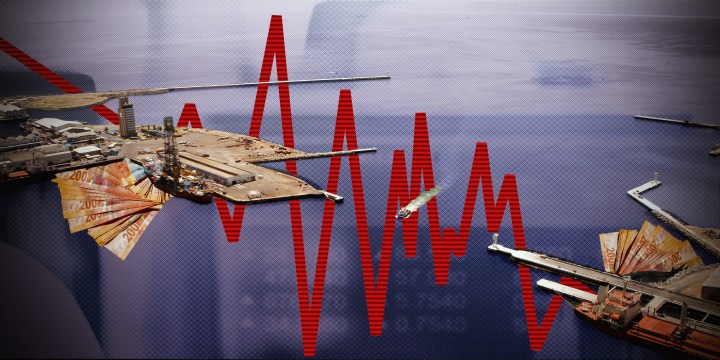ECONOMIC OUTLOOK
SA’s current account deficit narrows more than expected as imports fade on weakening demand

South Africa’s current account deficit narrowed much more than expected in the third quarter (Q3). This is a rare piece of good economic news which should provide the rand with some unexpected support. But the bad news is that it partly reflects weak domestic demand for imports.
South Africa’s deficit on the current account of the balance of payments narrowed sharply to R19.3-billion in Q3 from a revised R185.2-billion in the previous quarter, driven by a widening trade surplus, data unveiled by the Reserve Bank showed on Thursday.
This is equal to 0.3% of gross domestic product – compared with a gaping 2.7% in Q2 – and was much better than market expectations that it would only narrow to 1.9% of GDP.
The rand got a lift from the data, rising to 18.82/dlr by early afternoon trade from 18.98/dlr shortly before its release.
The current account is a key part of a country’s balance of payments and is essentially an accounting of its transactions with the rest of the global economy.
The good news is that the markedly smaller deficit on this front should provide the rand with some much-needed support.
The bad news is that this partly reflects weakening domestic demand, which in turn has reduced import volumes.
South Africa’s trade surplus widened significantly in Q3 to R189.1-billion from R22.2-billion in Q2 “as the value of merchandise imports decreased more than that of goods exports”, said the South African Reserve Bank.
This means that the value of both imports and exports declined, but imports fell at a faster pace.
“The decrease in the value of imports of goods and services reflected lower volumes while the decrease in exports of goods and services reflected lower prices,” said the SA Reserve Bank.
Lower import volumes point to fading demand, while the lower prices for exports partly reflect falling commodity prices, with a couple of notable exceptions such as gold.
Indeed, South Africa’s terms of trade – a ratio between export and import prices – deteriorated further in Q3 as the rand price of imported goods and services rose, while that for exports decreased.
In the current quarter, the value of imports and exports may still be falling as prices for key South African commodities such as platinum group metals have continued to slump, while massive backlogs have emerged at the country’s dysfunctional ports.
“Subdued demand domestically continues to weigh on import activity, while the fragile global manufacturing environment as well as structural domestic challenges continues to hinder export potential,” said Investec economist Lara Hodes.
The rand may get a temporary lift from this data, but it may prove to be a “dead cat bounce” as the numbers underscore a widening economic malaise. DM
















Our government is incompetant,they can’t create jobs,they spend more than saving,60% is receiving free money from the government while 40% is feeding the 60%.Tax revenue is low,government spending is high,government budget is low,government deficit is high,central bank balance sheet has exploded